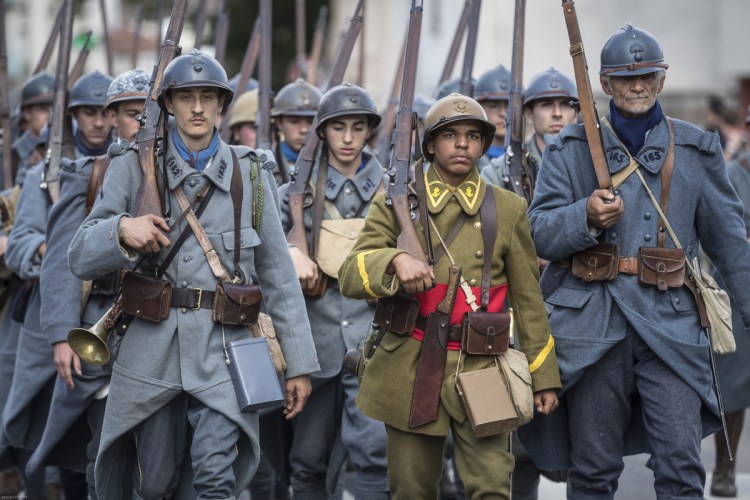VERDUN, France — Hundreds of volunteers from 18 countries have gathered in the northeastern French town of Verdun to keep alive the memory of those who fought under appalling conditions in World War I.
Re-enactors dressed in soldiers’ uniforms brought to life a big military encampment in the town and held a military parade Saturday, part of a series of events to mark the centenary of the end of the war.
Visitors could visualize soldiers’ daily life during the war through the reconstruction of field kitchens, First Aid posts and command posts.
Soldiers in khaki, gray or blue uniforms, depending on the country, and women wearing Red Cross nurses’ uniforms were presenting authentic objects and equipment from the 1914-1918 war.
Other volunteers were dispatched on key battlefield areas around Verdun. They didn’t re-enact any fighting out of respect for the sites, which have since become a symbol of peace.
Instead, German and Polish volunteers were sharing tips about military clothes and historic anecdotes with their French, Australian and English neighbors at the encampment.
The 10-month battle at Verdun – the longest in World War I – killed 163,000 French and 143,000 German soldiers and wounded hundreds of thousands of others.
Between February and December 1916, an estimated 60 million shells were fired. Entire villages were destroyed and never rebuilt.
The former battlefield still holds millions of unexploded shells, so that housing and farming are still forbidden in some areas.
Dozens of heads of state and government, including President Trump, are expected in Paris to commemorate the Armistice that ended the war on Nov. 11.
World War I remembrance sites and museums have seen a strong increase in tourist numbers in recent years, boosted by the commemorations of the centenary.
More than 1 million visitors were counted on the five main sites in and around Verdun in 2016, the year of the 100th anniversary of the battle.
Celine Guillin, visiting Verdun with her 8-year-old son, said the recreated encampment allowed visitors to be “very conscious of the hardness of life during the Great War. It was hard on soldiers, but also on their wives, their whole family.”
She pointed at a poster urging French women and children to work in the fields during the summer of 1914.
Send questions/comments to the editors.



Success. Please wait for the page to reload. If the page does not reload within 5 seconds, please refresh the page.
Enter your email and password to access comments.
Hi, to comment on stories you must . This profile is in addition to your subscription and website login.
Already have a commenting profile? .
Invalid username/password.
Please check your email to confirm and complete your registration.
Only subscribers are eligible to post comments. Please subscribe or login first for digital access. Here’s why.
Use the form below to reset your password. When you've submitted your account email, we will send an email with a reset code.